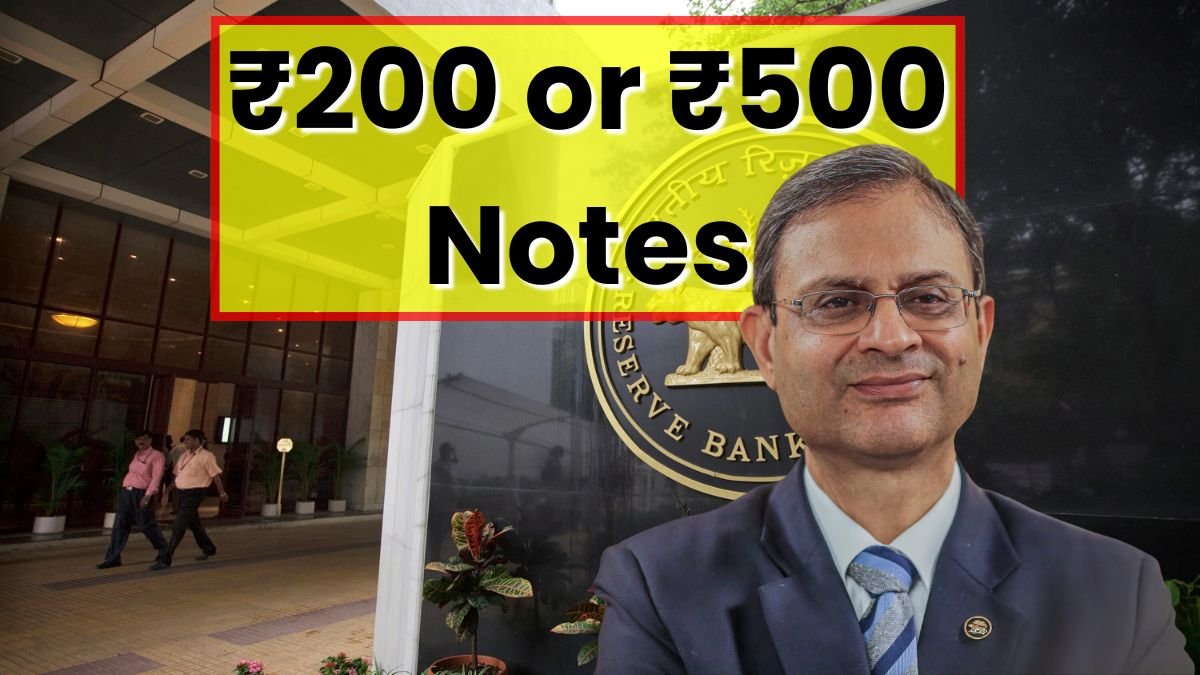Ever felt that sinking feeling in your stomach when you realize you’ve been handed a fake note? You’re not alone. In a world where every rupee counts, the last thing any of us need is to lose money to something that looks real but isn’t.
Well, if you’ve got ₹200 or ₹500 notes in your wallet, purse, or hidden stash somewhere, this RBI alert is something you need to know right now.
Why Is RBI Warning Us About ₹200 and ₹500 Notes?
Let’s be real most of us don’t stop to check every note we receive. We’re busy, trusting, and just trying to get through the day. But here’s the shocker:
According to the RBI’s 2024-25 report:
- Counterfeit ₹500 notes jumped by 37.3%
- Fake ₹200 notes increased by 13.9%
That’s over 1.17 lakh fake ₹500 notes and more than 32,000 fake ₹200 notes caught in just one year.
And here’s the scary part:
Most of these fake notes were found by private banks—not people like you and me.
So, yeah… this isn’t just a banking problem. It’s your problem. And mine. Because if you unknowingly spend a fake note, you don’t get that money back.
Spotting a Fake ₹500 Note: Here’s What to Look For
Want to protect yourself and your family from losing hard-earned money? You need to learn to spot the real from the fake.
Here’s how to check if your ₹500 note is genuine:
| Feature | What to Look For |
|---|---|
| Series | Mahatma Gandhi (New) |
| Color | Stone grey |
| Size | 66 mm x 150 mm |
| Security Thread | Changes color from green to blue when tilted |
| Watermark | Mahatma Gandhi’s portrait + Electrotype (500) |
| Raised Printing | Mahatma Gandhi, Ashoka Pillar, Bleed lines |
| Back Image | Red Fort with the Indian flag flying high |
How to Check a ₹200 Note: Small But Tricky
Don’t underestimate this smaller denomination. Fake ₹200 notes are creeping in fast too.
Here’s what to check:
| Feature | What to Look For |
|---|---|
| Color | Bright yellow |
| Size | 66 mm x 146 mm |
| Security Features | 17 total – including Devanagari ‘200’, watermark, security thread, micro text |
| Back Image | Sanchi Stupa + Swachh Bharat logo |
| For the visually impaired | Raised printing and symbols |
What Should You Do If You Find a Fake Note?
It’s okay to panic for a second. But here’s what you must do next:
- Don’t try to use it. You could get into serious trouble.
- Take it to your nearest bank branch. They’ll guide you.
- Report it to the police if necessary.
- Stay calm. You did the right thing.
Remember: Reporting fake currency helps protect everyone. It’s not just about the money—it’s about trust, safety, and the economy we all rely on.
Why This Matters More Than Ever
You’re already juggling rising prices, loan EMIs, and monthly expenses. Losing even ₹200 or ₹500 to a fake note? That’s a grocery bill. That’s school supplies. That’s real money lost.
And the truth? Fake currency hits the poorest the hardest.
That’s why being alert is more than smart—it’s essential. Whether you’re at an ATM, paying at a local market, or getting change from a cabbie—take 5 seconds to check.
You’ve worked too hard to let someone steal your peace of mind with a slip of fake paper.
FAQs About the RBI Alert on ₹200 and ₹500 Notes
Q1: Why are there more fake ₹500 notes than ₹200?
Because ₹500 notes are more commonly used and offer bigger value to counterfeiters, making them a prime target.
Q2: Can I get my money back if I unknowingly receive a fake note?
Unfortunately, no. RBI rules don’t allow reimbursement for fake notes. But you can and should report it.
Q3: Are shops allowed to refuse a note if they think it’s fake?
Yes. If someone suspects a note is counterfeit, they can legally refuse it. It’s not personal—it’s protection.
Q4: Is there a mobile app to check if a note is fake?
RBI’s MANI app helps visually impaired users identify notes, but there’s no official app for verifying fakes. Learn to spot key features manually.
Q5: Can I get in trouble for having a fake note?
Not if you report it right away. Trying to use it knowingly? That’s a different story.
Q6: Are ₹200 and ₹500 notes being discontinued?
No. The RBI has not announced any withdrawal. This is just a warning to stay cautious—not panic.
